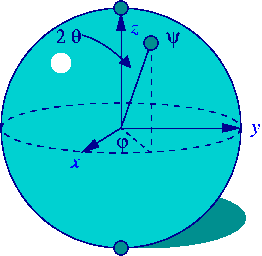
Every day on the bus I see kids plugged into their iPods, heads bobbing to unheard music. This synchronization with the beat, according to
author and neurologist Oliver Sacks, is “a uniquely human experience.”
With the exception of the penguins from “Happy Feet,” other animals just don’t seem to appreciate music the way we humans do. We dance and sing to it, sometimes to the chagrin of those around us.
“There are quite a number of people who are severely tone deaf-- but just don’t know it,” Sacks said, to chuckles from the overflow crowd in Duke's Page Auditorium Wednesday night.
Sacks, who provided the kickoff to a day-long Thursday symposium on
Music and the Brain, then explained the peculiar case of a woman who thought music was completely unintelligible. She had been to concerts, but found them excruciating. Her idea of music was dropping pots and pans on the kitchen floor. Finally, doctors were able to diagnose her with congenital immusia-- the inability to perceive music in a normal way.
Sacks shared a story about another immusiac who was suddenly inspired by music -- after he was struck by lightning. The man, while talking on a cellphone outside during a storm, was hit by lighting and sent into cardiac arrest. When he recovered, he was shocked to discover a love of music, and now is a fairly well-known composer. What are the odds of that?
Next Sacks shared a story about a man who seemed to be an immusiac by all appearances. After being ridiculed as a child for his inability to sing, the man avoided music for 30 years. Finally, he decided to conduct an experiment on himself. He took singing lessons for a year, and had an MRI done before and after. Not only did he love the lessons, but the before and after MRIs revealed that his rediscovery of music had actually changed his brain.
“There is something special about the ability to play music,” Sacks said.
According to Sacks, musical memory can endure when sometimes nothing else does. After a stroke, a formerly musical man had only a 7-second memory. From minute to minute, he could not remember where he was or what he was doing. And yet, when guided to the stage, he could conduct an orchestra with all of his professional ability.
Sacks also discussed his experiences at Beth Abraham Hospital, which he chronicled in his book, “Awakenings.” There he encountered several patients who were frozen, transfixed by a sleeping sickness called
encephalitis lethargica. Music made a difference, he discovered, but “it had to have rhythm, had to have a beat.” When they heard music, the formerly frozen patients were able to move.
“Music will act as a sort of vehicle, will carry memory and emotion with it, as it does for all of us,” Sacks said.
Sacks went on to describe his experiences with Alzheimer’s and Parkinson’s patients, and with those suffering from schizophrenia and depression. He spoke about an event that happened to novelist William Styron, Duke alumnus and author of a memoir about depression, “Darkness Visible.” According to Sacks, Styron suffered from depression for many years. One night, he stayed up late to watch a movie by himself. At one point during the film, a character sang a single, clear contralto note, and it “pierced his heart like a dagger.” All at once came an outpouring of happy memories, of his wife, his children, and his work.
“This opening-up power of music can’t be predicted, but when it works, it can be astounding,” Sacks said.

 Dr.Ramanujam, the multi-photon fluorescence microscopy—a technique enables doctors to "peer into the individual cells in a very non-invasive way to see how things change as early cancer progresses."
Dr.Ramanujam, the multi-photon fluorescence microscopy—a technique enables doctors to "peer into the individual cells in a very non-invasive way to see how things change as early cancer progresses." lored by Ramanujam's group is called Ultraviolet-visible optical spectroscopy (UV-VIS). It is similar to fluorescence spectroscopy, in a way that fluorescence involves transitions from the excited state to the ground state, while absorption deals with electron transitions from the ground state to the excited state.
lored by Ramanujam's group is called Ultraviolet-visible optical spectroscopy (UV-VIS). It is similar to fluorescence spectroscopy, in a way that fluorescence involves transitions from the excited state to the ground state, while absorption deals with electron transitions from the ground state to the excited state.














































